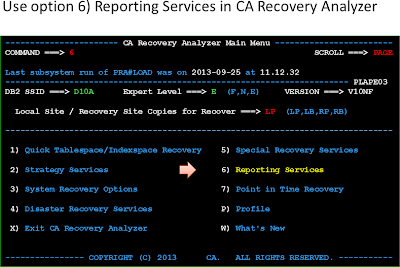Review this 3 minute video and
discover how you can use the Expert Rules feature of CA
Plan Analyzer for DB2 for z/OS to tune your embedded SQL statements. The
product can be used by the DB2 Database administrator to analyze existing
applications, or by Application Programmers to improve their SQL statements
prior their programs reach the production environment.
CA
Plan Analyzer for DB2 for z/OS allows you
to bypass frustrating and time-consuming methods for plan analysis such as the
DB2 EXPLAIN facility, the PLAN_TABLE output or catalog statistics collection.
Determine which access paths DB2 has chosen and why with easy-to-understand
reports and the ability to customize the individual skill levels.











